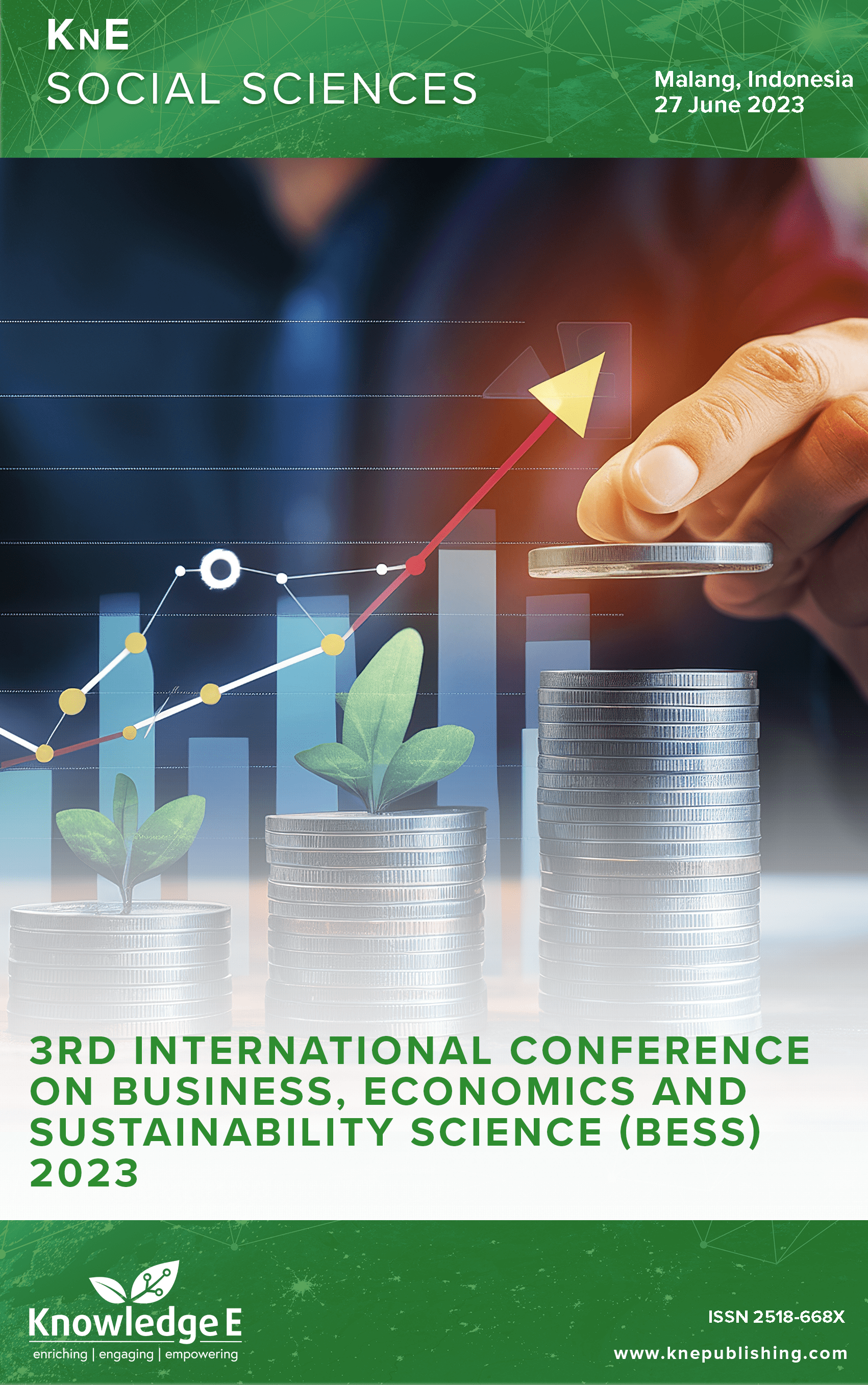Cost and Benefit Analysis for Hydroponic System to Increase Women's Empowerment and Food Sustainability
DOI:
https://doi.org/10.18502/kss.v9i21.16687Abstract
This research aims to analyze the costs and benefits, the break even point (BEP), and the payback period (PP) for installing a hydroponic system in Jongbiru village. From the results of this benefit-cost analysis it appears that the hydroponic organic vegetable business is a very potential small business both economically and socially. The economic potential of small hydroponic organic vegetable businesses can generate substantial profits in the short term. The social potential of small hydroponic vegetable businesses is to empower housewives who previously had no income, and have the ability to support the family needs and economy. In the future, we hope that each family can build a simple hydroponic vegetable installation. The results were as follows, 1) the benefits were much more than its costs, 2) BEP can be reached in Rp. 2,700,000 sales, and 3) the payback period is more than a year. The hydroponic installation can also be planted with a wide variety of vegetables and fruits to meet the nutritional needs of the family, and also fulfill market demands. The more varied the plants used in the hydroponic installation, the wider the benefit-cost analysis. In this way, more harvests are likely each year, with faster BEP and higher selling points.
Keywords: cost-benefit analysis, break even point (BEP), payback period (PP), hydroponic vegetable
References
Aula, Mucharromatul, Nasution, Arman Hakim., and Ardiantono, Dewie Saktia. Perancangan Model Bisnis Berbasis Circular Economy. Jurnal Sains dan Seni ITS Vol. 7, No. 2 (2018), 2337-3520 (2301-928X Print) DOI: https://doi.org/10.12962/j23373520.v7i2.34746
Farhadi M, Ismail R, Fooladi M. Information and communication technology use and economic growth. PLoS One. 2012;7(11):e48903. DOI: https://doi.org/10.1371/journal.pone.0048903
Fix B. The aggregation problem: Implications for ecological and biophysical economics. BioPhys. Econ. Resource Qual. 2019;4(1):1–15. DOI: https://doi.org/10.1007/s41247-018-0051-6
Gakhovych, N.G., Kushnirenko, O.M., Zarudna, O.S. Circular economy as a strategic priority for the development of global value chains. Econ. Bullet. Univ. 46, 103–115. DOI: https://doi.org/10.31470/2306-546X-2020-46-103-115
Geissdoerfer M, Savaget P, Bocken NM, Hultink EJ. The circular economy: A new sustainability paradigm. J Clean Prod. 2017 Feb;10:757–68. DOI: https://doi.org/10.1016/j.jclepro.2016.12.048
Grdic ZS, Nizic MK, Rudan E. Circular economy concept in the context of economic development in EU Countries. Sustainability (Basel). 2020 Apr;12(7):3060. DOI: https://doi.org/10.3390/su12073060
Grebski, M., Mazur, M. Social climate of support for innovativeness. Prod. Eng. Arch. 28 (1), 110–116. DOI: https://doi.org/10.30657/pea.2022.28.12
Gurochkina, V.V. Circular economy: Ukrainian realities and opportunities for industrial enterprises. Econ. Bullet. Series: Financ. Account. Tax. 5. Igumentsev, O.V. Strategic directions of enterprise potential development in the conditions of circular economy. Econ Bull. 2021;3:191–6.
Holland P. Simple introduction to cost and benefit analysis. SPREP PACC cost and benefit workshop: Food security pilot demonstration projects. Suva, Fiji Island.
Janikowska, O., Kulczycka, J., Nowaczek, A. Deliberation as a tool in cooperation with stakeholders in companies deploying the Circular Economy based on the example of Unimetal Recycling Sp. z o.o. Sustain. Prod. Circular Econ. Impact Bus. Soc. 172–186. DOI: https://doi.org/10.4324/9781003179788-11
Khatiwada D, Golzar F. Circularity in the management of municipal solid waste: A systematic review Vides un Klimata Tehnologijas. Scientific Proceedings of Riga Technical University. Environmental and Climate Technologies. 2021;25(1):491–507. DOI: https://doi.org/10.2478/rtuect-2021-0036
Kolosok S, Bilan Y, Vasylieva T, Wojciechowski A, Morawski M. A scoping review of renewable energy, sustainability and the environment. Energies. 2021 Jul;14(15):4490. DOI: https://doi.org/10.3390/en14154490
Kowalski Z, Kulczycka J, Makara A, Verhé R, De Clercq G. Assessment of energy recovery from municipal waste management systems using circular economy quality indicators. Energies. 2022 Nov;15(22):8625. DOI: https://doi.org/10.3390/en15228625
Kulyna, H.M., Nalukova, N.I. Informatization of the sphere of social security as a necessary component of the formation of the digital economy. World Financ. 1 (62), 95–106.
Kuzior A, Lobanova A. Tools of information and communication technologies in ecological marketing under conditions of sustainable development in industrial regions (through examples of Poland and Ukraine). J Risk Financ Manag. 2020 Oct;13(10):238. DOI: https://doi.org/10.3390/jrfm13100238
Kuzior, A., Kwilinski, A., Tkachenko, V. Sustainable Development of Organizations Based on the Combinatorial Model of Artificial Intelligence. Entrepreneurship Sustain. Issues 7 (2), 1353–1376. DOI: https://doi.org/10.9770/jesi.2019.7.2(39)
Murray A, Skene K, Haynes K. The circular economy: an interdisciplinary exploration of the concept and application in a global context. J Bus Ethics. 2017 Feb;140(3):369– 80. DOI: https://doi.org/10.1007/s10551-015-2693-2
Nabi, S., Fayaz, N., Rather, S. A., & Mir, A. A. Hydroponics: Environmentally sustainable practice in the agricultural system. Pharma Innovation Journal, 11, 207-212.
Nguyen H, Stuchtey M, Zils M. Remaking the industrial economy. McKinsey Quaterly; 2014.
Ouko KO, Ogola JR, Ng’on’ga CA, Wairimu JR. Youth involvement in agripreneurship as Nexus for poverty reduction and rural employment in Kenya. Cogent Soc Sci. 2022 Dec;8(1):2078527. DOI: https://doi.org/10.1080/23311886.2022.2078527
Stahel, W. R. The circular economy. Nature, 531(7595), 435-438. 952-961. DOI: https://doi.org/10.1038/531435a
Velazquez L, Munguia N, Alvarez-Alvarez D, Cuamea-Cruz G, Anaya-Eredias C, Martinez-Casta neda F. Residential waste segregation: the interconnection with SDG 2 zero hunger. Environ Chall (Amst). 2023 Jan;10:100675. DOI: https://doi.org/10.1016/j.envc.2022.100675

